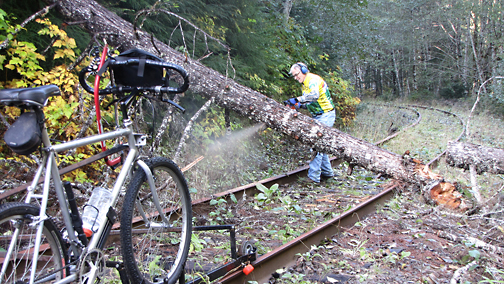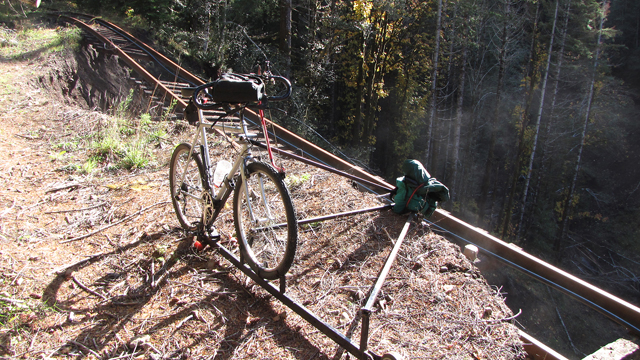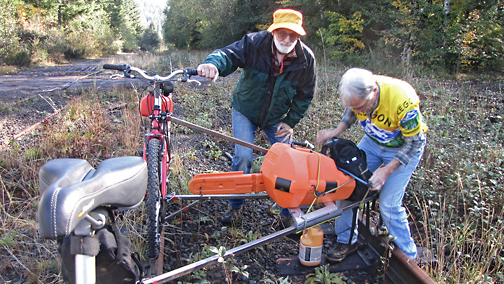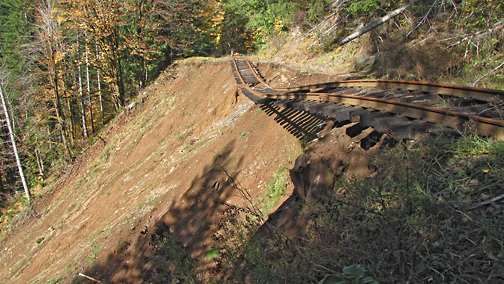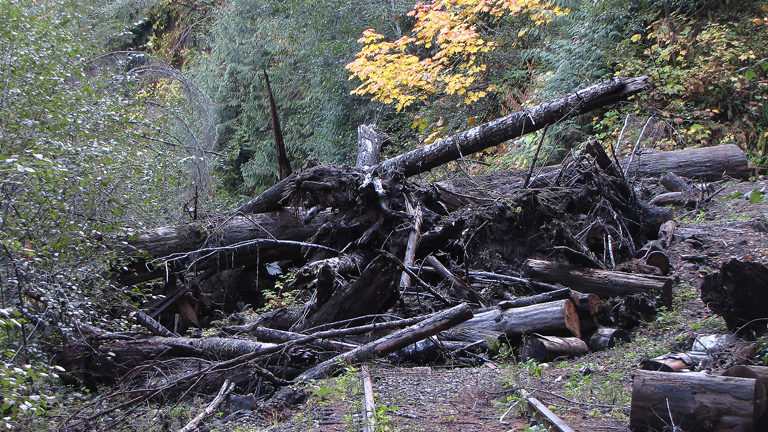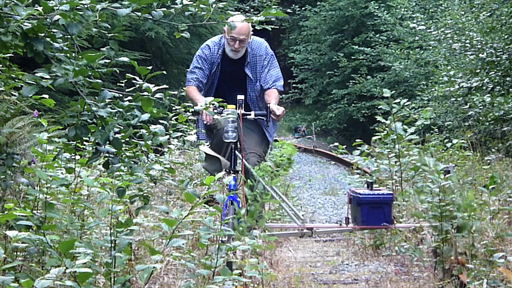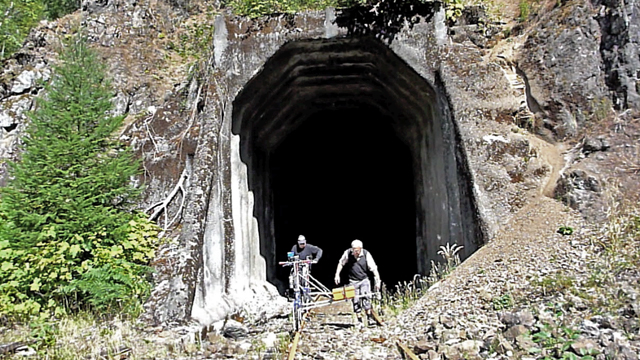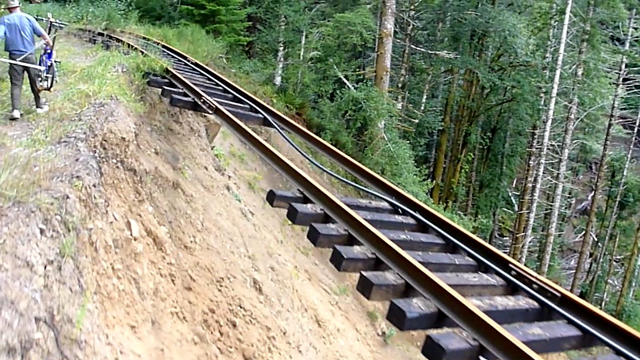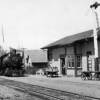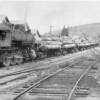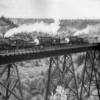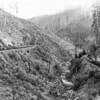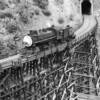 | ||||||
Port of Tillamook Bay Railroad
Part 2 - Cochran West
Peter Hoffman
At 1824 feet Cochran is the highest point on the old Southern Pacific Tillamook branch. Here, at milepost 800, the branch crests the Coast Range which separates the Willamette Valley from the Pacific Coast. There were four logging railroads that connected to the Tillamook Branch in Cochran
where C. H. Wheeler had a lumber mill. There was a depot, turntable and maintenance buildings.
Today, there is nothing but weeds.
This washhout is high on the canyonside above Wolf Creek, just east of tunnel 27. Passing through the tunnel the railroad makes a sharp horseshoe turn and heads in the opposite direction on the other side of the canyon below.
There are still two tracks at Cochran (see historic photo album), but finding them can be a challenge. Here my bike rests on the rails after we plowed through what was once a thriving station.
Reaching Cochran requires a long drive over a dirt logging road. Isolated far from the nearest town, Cochran is
the perfect place to begin the westward descent into the Salmonberry Canyon.
But within the first mile we came
across what proved to be dozens of large fallen trees blown down by gale force winds. After several trips with hand saws and lifting the bikes over the obstructions we realized making any progress was going to require a heavy duty chainsaw.
We made a half dozen trips clearing the windfall before we reached our first goal, tunnel No. 27and the curved trestle over Wolf Creek.
Our first look at what lay ahead.
As it turned out, tree falls like this were
encountered about every 100 yards for
about 4 miles.
Above, Jim mounts the big
chainsaw on his outrigger as
we prepare to depart Cochran.
At left, the sawdust flies as Jim
cuts through a good sized Pine.
Fortunately, some trail bikers had been clearing
trees from the rails also,
although many times they did not cut them wide enough for our railbikes to pass. It took us two years
to reach Tunnel 27 which is only 5 miles out of Cochran.
The Big Baldwin Trestle (see historic photo album). Years ago this was a spectacular sight, but the trees have obscured the view of the crossing and its dizzying height. At left, Jim clears branches from the mouth of tunnel 26.
Emerging from the other end of tunnel 26, Arne and Morgan dismount to carry their bikes over a small rock slide.
I fight my way through the young trees which are now prevalent along the entire line.
The further down the canyon we went
the more washouts we encountered. Some were high above the stream below
and sometimes we let our bikes coast
across the chasms with out the rider onboard while we chased along the narrow pathways clinging to the mountainside.
The most severeof washout occurred just before tunnel 27. A couple hundred feet of hillside had slipped away.
The rails were left dangling high above Wolf Creek. See the historic photo album for the horseshoe curve.
Early autum and a bright sunny day. Jim heads upgrade across the curved trestle
crossing Wolf Creek. Tunnel 27 is directly at the far end of the bridge, completing
the horseshoe curve (see historic photo album).
We were able to achieve our first goal, tunnel 27 and the Wolf Creek trestle, but the ultimate objective of reaching the Salmonberry River was still a few miles ahead. A massive slide (see photo below) stopped our progress. Hiking past it, we encountered blown-down trees covering the tracks for the next mile. It ended all hopes of going further. And now, the undergrowth has choked off our ability to ride in the future, so with great sorrow we say goodbye to the beautiful Tillamook line through the Coast Range.
I highly recommend the book "The Southern Pacific in Oregon" by Ed Austin and Tom Dill.
Their coverage of the Tillamook line is phenomenal and the photos show how spectacular the
railroad was in its heyday before the forests obscured the views (click on album below).
Tillamook Line - Part 3 More Memories
View the historic photo album and compare with the current photos above.
